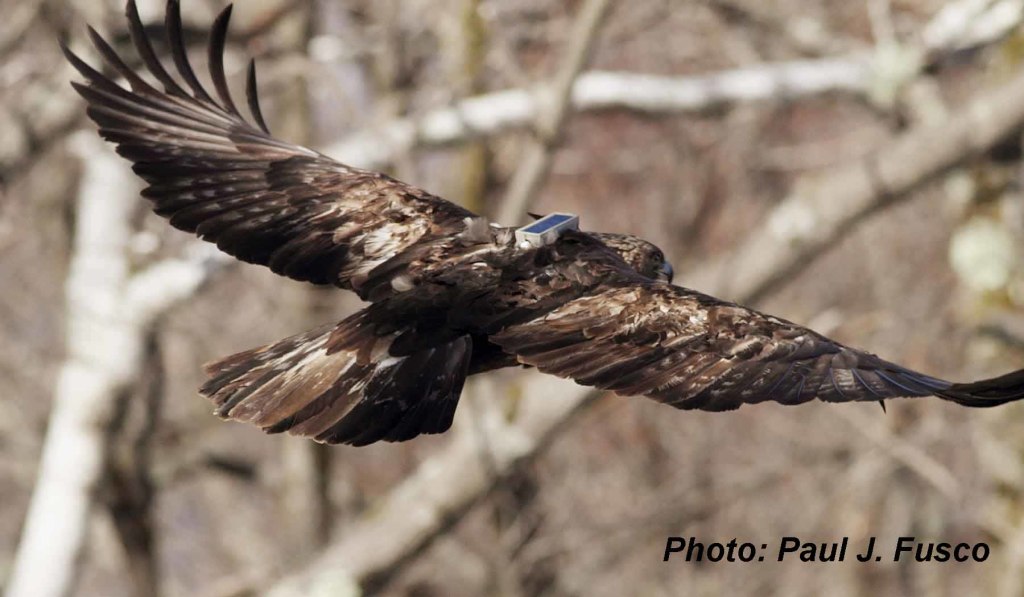
The Western and Eastern Golden Eagles of North America are geographically distinct. The Eastern population is smaller and breed in Eastern Canada and winter in the U.S.A. west of the Mississippi. (Image credit: Paul J. Fusco)
Using GPS trackers and studying feather samples from 42 Golden Eagles (Aquila chrysaetos) researchers found that they exhibit migratory connectivity, as individuals from the same breeding population migrate to the same wintering area. This means that subpopulations of the Golden Eagle are more vulnerable to environmental changes than currently expected.
The authors found that individual birds that wintered furthest north migrated the farthest south, “leapfrogging” over other Golden Eagle populations.
Additionally the researchers found that the Golden Eagle subpopulation that summers in southern Canada, spend the winter in the northeastern Appalachian Mountains where large wind-power facilities are being built, placing this Canadian subpopulation at greater risk
Original research paper published in The Condor: Ornithological Applications on August 12, 2015.
Names and affiliations of selected author


